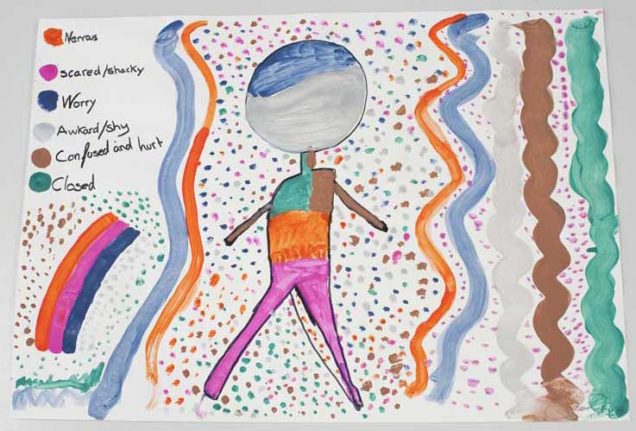Is Art Therapy a Legitimate Form of Treatment?
According to the American Art Therapy Association, art therapy can be defined as a mental health and human service aimed at engaging the mind, body, and spirit through visual and symbolic expression. The goal of this therapy is to empower individuals, communities, and society by giving a voice to experience through this visual/symbolic expression. It is used to, “increase cognitive and sensorimotor functions, foster self-esteem and self-awareness, cultivate emotional resilience, promote insight, enhance social skills, reduce and resolve conflicts and distress, and advance societal and ecological change.” Art therapy is administered through master-level clinicians at schools, prisons, hospitals, psychiatric and rehabilitation facilities, senior centers, etc. to treat people with medical and mental health problems, and those in search of emotional, creative, or spiritual growth (American Art Therapy Association , 2017).
It may just be me, but I feel like compared to other mental health practitioners, Art Therapists may be looked down on. When you hear the term “Art Therapist”, you may think that the job is a walk in the park or just a chaperone coloring with kids. That could not be further from the truth. Art Therapist’s go through an extensive amount of schooling and training in order to give the patients the quality and therapeutic care that they need. To become an Art Therapist, a master’s degree is needed for ENTRY LEVEL in the field with coursework including: training in the creative process, psychological development, group therapy, art therapy assessment, psychodiagnostics, research methods, and multicultural diversity competence. Upon completion of graduate school, the future therapist must become board certified through the Art Therapy Credentials Board. To accompany that, therapists must complete 100 hours of supervised work along with 600 hours of a clinical internship. I know what you are all thinking and no, the Art Therapy Association does not consider an adult coloring book a form of therapy because it is not administered by a licensed Art Therapist (American Art Therapy Association , 2017). With that being said, they do not discourage the use of one. Would you trust an Art Therapist for you or a loved ones counseling needs?
Below I have attached a video of Donna Betts, PhD, ATR-BC explaining how art therapy is administered to people with Autism Spectrum Disorder:
When it comes to clinical effectiveness of art therapy in all sorts of patients, multiple studies have been done and yield interesting results. When it comes to those with depression, in nine studies it was found that art therapy significantly reduced depression in six of those cases. In seven studies examining anxiety, six of those studies showed a strong decrease in anxiety. In the three studies addressing trauma, all of them showed a reduction of trauma symptoms. In the one study examining cognition, the control group showed significant improvements in cognitive function relative to the art therapy group. Finally, when it comes to distress, the three groups all were found to show a reduced amount of distress (Uttley, 2015). There is a lot of research out there proving the benefits of art therapy in all sorts of realms. With this being the case you would think that art therapy would be offered as a practice more than it is. Even though personally I am not a very talented artist, I feel as if looking at art and its beauty is an instant mood elevator. Regardless of your artistic ability, would you be interested in trying art therapy?

Art work done by sexual abuse survivor “Maxine” when asked to draw how she feels emotionally on a daily basis (The Palmeira Practice, 2018).
References:
About Art Therapy. American Art Therapy Association. (2017). https://arttherapy.org/about-art-therapy/
Art Therapy in Action. American Art Therapy Association. (2017). https://arttherapy.org/art-therapy-action/
The Palmeira Practice | Brighton & Hove Counselling. (2018, February 23). Working with sexual abuse in art therapy – The Palmeira Practice: Brighton & Hove Counselling. The Palmeira Practice | Brighton & Hove Counselling. https://www.thepalmeirapractice.org.uk/expertise/2018/2/22/working-with-sexual-abuse-in-art-therapy.
Uttley, L. (2015, March). Clinical effectiveness of art therapy: quantitative systematic review. Systematic review and economic modelling of the clinical effectiveness and cost-effectiveness of art therapy among people with non-psychotic mental health disorders.